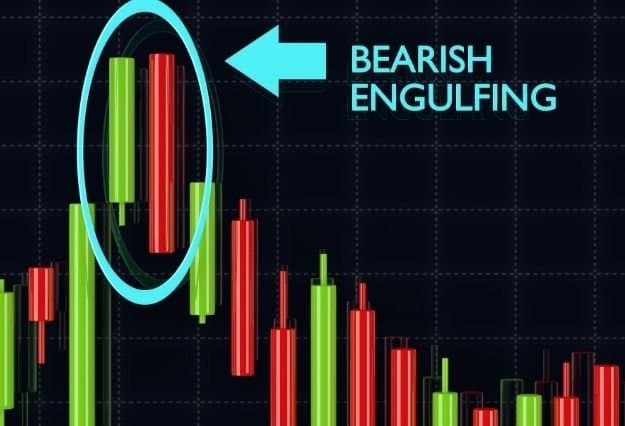Mat Hold Pattern
A mat hold pattern is either bullish or bearish—in which a bullish pattern occurs during an upswing, whereas a bearish pattern occurs during a decline.
The bullish variant consists of a vast up candle, a gap higher, three smaller candles, and another sizable up candle.
On the other hand, the bearish form consists of a colossal down candle, a gap below, three smaller up candles, and another large down candle.
What is a Mat Hold Pattern?
A mat hold pattern is a candlestick shape that signals the continuance of a previous move.
This pattern begins with a lucrative trading day in one direction, followed by three modest opposing trending days. The fifth day follows the first day’s design, pushing lower or higher in the same way as the first day.
In technical analysis, the pattern is regarded as a reliable yet uncommon indication. It’s sometimes mistaken with the rising-three representation. However, the distinction is that transactions on days two to four of the rising-three indicator typically stay inside the high and low set on the first day.
Investors and analysts use this pattern to forecast if and to what extent the present upswing will continue. Traders and experts typically believe that this chart indicates that momentum will remain stable, and the rising trend is expected to continue.
As aforementioned, mat hold patterns can be bearish or bullish. A bullish pattern begins with a substantial upward candle, a gap higher, and three smaller candles that go downward. These candles must remain above the first candle’s low. The fifth candle is a big candle that rises once more. In other words, the pattern appears within the context of an overall upswing.
The bearish form is the same as the bullish form, except that candles one and five are giant down candles, whereas candles two through four are more petite and travel upward. These candles must remain below the first candle’s peak point. Candle five is a long candle to the downside that wraps up the pattern, and it must occur during a downward trend.
Bullish Mat Hold Candlestick Pattern
This five candlestick pattern emerges in an up-trending market and indicates that the pattern will continue to be bullish. The initial candle of the bullish is long and positive, followed by three small negative candles. The last candle is big and bullish, closing on top of the pattern’s peak.
The first and last candles in a bullish mat hold pattern are giant and bullish, while the three candles in between are tiny and bearish. That said, the following are features of a Bullish Mat Hold Pattern:
- The first candle must always be tall and positive, with a bullish tendency
- The next three candles are bearish, closing lower than the first
- The last candle is big and bullish, successfully closing above the pattern’s high.
Bearish Mat Hold Candlestick Pattern
Bearish mat holds candlestick pattern is a five-candle bearish continuation pattern that emerges in a negative trend and suggests that the market is taking a little break before continuing to fall. Five candlesticks are included in a bearish mat hold—the first and fifth candles are both negative, while the three candles in between are all positive. That said, a Bearish Mat Hold has the following features:
- The first candle is tall and bearish, indicating that the trend is negative
- The second, the third, and the fourth candles are all tiny and bullish
- The last candle is big and bearish, closing at a lower value than the pattern’s bottom.
Inverted Mat Hold pattern
This pattern is built of five Japanese candlesticks—it’s a three-method structure variant. The first candlestick is a significant bearish candlestick (red), followed by three little bullish candlesticks (green). Each small candlestick must close higher than the one that came before it.
The second candlestick must have a bearish gap at its beginning. Finally, the last candlestick must start with a bearish gap and close below the second candlestick’s lower point. The inverted saucer pattern is another name for this design.
What Does the Mat Hold Pattern Tell You?
1. Bullish Mat Hold
When the present market trend is positive, many investors and traders think that prices will rise further. As a result of this assumption, the market develops the first positive candle of the bullish mat hold.
However, after rising for some period, the market becomes oversaturated, with many purchasers flocking in. Similarly, due to the recent robust advances, an increasing number of market players are concerned that a correction is on the way.
As a result, additional traders attempt to exit their positions, causing a flood of sell orders to the market, resulting in three bearish candles.
Despite the lack of a pullback, it did not become very problematic; this rekindles the optimistic feeling, which seizes the opportunity to propel the market higher, producing the final, bullish candle. The bullish mat hold is a narrative of an ascending market that had a typical downturn before continuing to new heights.
2. Bearish Mat Hold
Because the market is adverse, most traders have a pessimistic perspective and anticipate that prices will fall. As a result, there will be a lot of selling pressure, and the market forms the first negative candle of the bearish. When the market has been down for some time, it is getting oversold, raising the prospect of a pullback.
As traders understand this, they cease issuing sell orders, expecting a pullback—allowing the bullish market players and their purchase orders to take over, driving the market upward over the next three bars.
Although the market generates three positive candles, they are brief and insignificant, indicating that the bears are in control and the bulls are battling.
The market’s last bearish candle shows that what is witnessed is only a brief retreat and that the market is heading down.
Example of the Mat Hold Pattern
The mat hold pattern is uncommon—traders may accept minor variations in the pattern as long as the general hypothesis of the pattern is maintained.
In Alphabet Inc. (GOOG), the following pattern begins with an assertive rising candle in a general uptrend. This is followed by four candles that remain above the first candle’s low. Usually, the bullish pattern consists of three candles that move downwards. The design is followed by another surge to the upside, albeit this time it is brief.
Despite the divergence from the norm—six candles instead of five—the overall pattern indicates a significant hike, a retreat, and then a massive surge in the prevailing direction towards the pattern’s finish. The trader must decide whether or not to allow for minor variations in the pattern.
How Do I Identify The Mat Hold Candlestick Pattern?
A mat hold structure is built out of five Japanese candlesticks. This is a variant of the three techniques structure. The first is a significant bullish candlestick (green), followed by three tiny bearish candlesticks (red). Each small candlestick must shut lower than the previous one.
The start of the second candlestick must be on a positive gap. Finally, the last candlestick must begin on a bullish gap and close above the high point of the second candlestick. The design is also called the rising three-method pattern.
What’s the Difference Between a Mat Hold and a Rising Three Pattern
An ascending three pattern is quite similar to a mat hold, except that there is no gap after the first candle, making this pattern uncommon.
Mat Hold Pattern Limitations
- The mat hold pattern is difficult to locate. It happens seldom, and the price does not always move as predicted
- The mat hold pattern has no profit goal. If the price moves as predicted, the design does not indicate how far it may go. To identify an exit, another approach, like trend analysis or technical indicators, or maybe another candlestick pattern, will be required
- The mat hold pattern is usually utilized with other analysis methods since it can be inaccurate if traded alone.
How Do I Trade When I See The Mat Hold Candlestick Pattern?
The mat holds a candlestick pattern indicates that the tendency has not been reversed. This is an excellent topic to include in positions. The pattern is a more powerful continuation pattern than the others. During the rest days, the price remains near the top of the white candle’s upper range.
1. Criteria
- A long white candle is forming as a result of an upswing.
- A day with a gap up that closes lower than it opened creates a tiny black candle.
- The following two days, tiny candles are formed.
- The last day gaps up and closes above the preceding four days’ trading ranges.
2. Pattern Psychology
This candlestick pattern doesn’t always have drawbacks like other trading strategies and is easy to recognize. The pull-back days are less worrying, and the generally flat rest period is not as frightening. There are three days when the bears are unable to lower the price significantly, and as a consequence, the bulls re-enter the market with enthusiasm.
Incorporating investing psychology into candlestick signals facilitates understanding of what is going on in an investor’s head. The signs were created through centuries of visual research and interpretation by skilled Japanese rice dealers.










